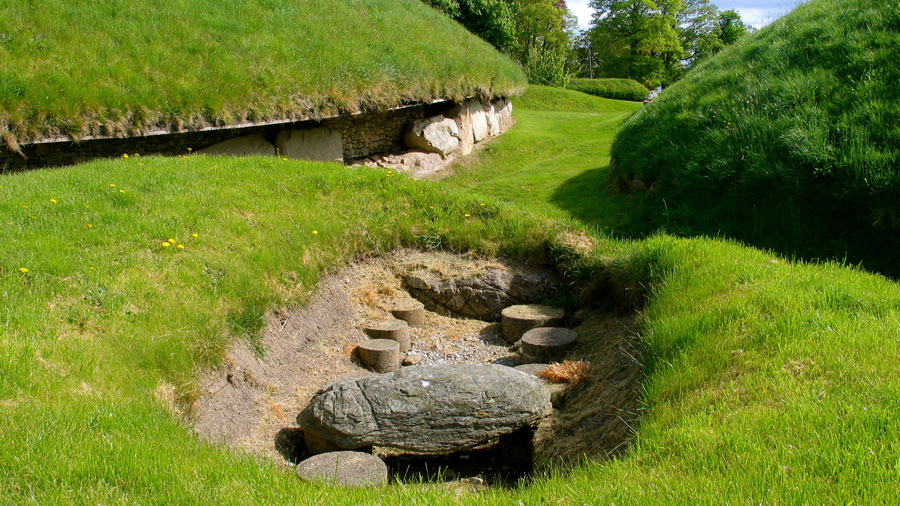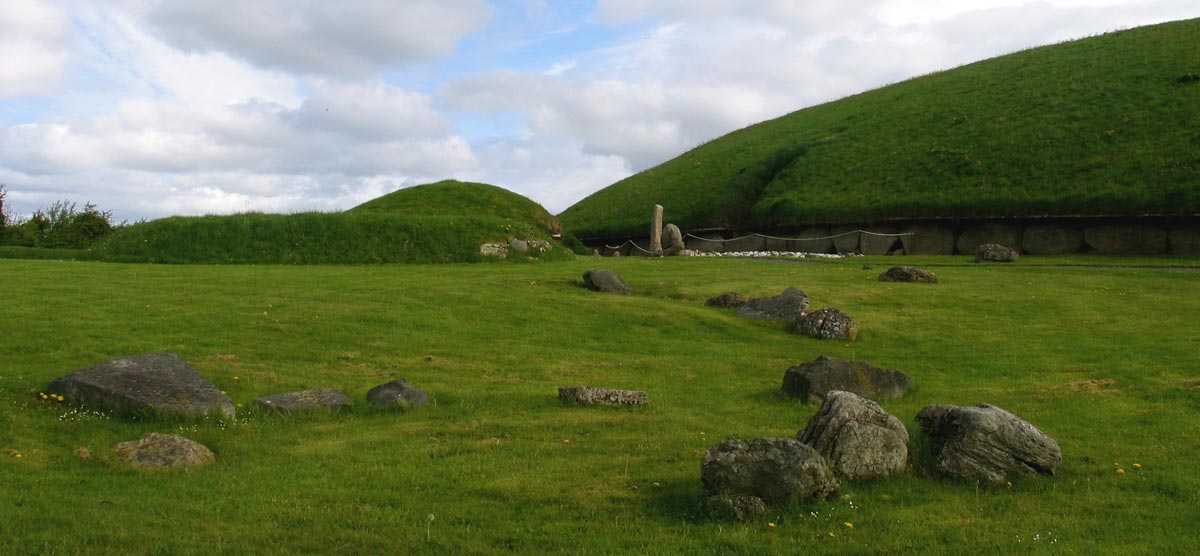Knowth - Satellite Site 3
Satellite Mound 3 at Knowth is a small site located south of the Main Mound. Site 3 was about eleven meters in diameter and had a short undifferentiated chamber with no evidence of a passage. The chamber seems to be oriented to the north west and measured 3.5 x one meter in width. A cremation with a decorated burnt bone or antler pin object was found close to the chamber, along with some shards of coarse pottery and some irregular lumps of chalk.

Image © George Eogan 1976.
The mound, which was mostly destroyed at the time of excavation, was built in stratified layers like the larger cairns of Newgrange and Knowth. There are ten of the original kerbstones in place, all found around the north side of the cairn. Engraved spirals were found on only one stone, a kerbstone on the northeast side of the site.
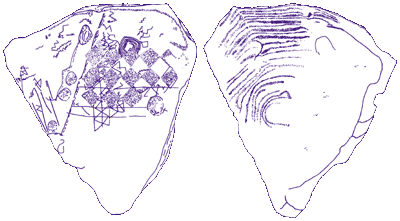
Image © George Eogan 1976.
Knowth - Satellite Site 4
Site 4 at Knowth was rediscovered during the excavations; nothing of the monument was visible on the surface. This site was a large monument, about seventeen meters in diameter with an undifferentiated passage and chamber about eight meters long.
Some twenty sockets showed where the kerbstones had stood, some of which contained packing stones which would have been used to keep the top of the kerb level. There were six settings or arcs of stone laid out on the old ground level, similar to those found at Carrowmore in Circle 1 and Circle 27. Some ten kerbstones were found, only three of which remained in their original positions.
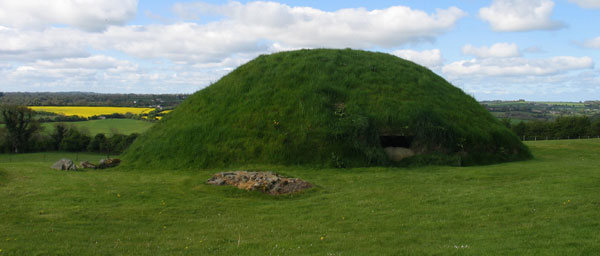
The passage was divided by sillstones, and the innermost sill was unusually high, and decorated on both sides and on the top (illustrated above). It was the only engraved stone found within the chamber.
A large circular setting was found outside the entrance. This extremely interesting feature measured more than two meters in diameter and was paved with quartz and surrounded by two concentric rings of smaller stones.
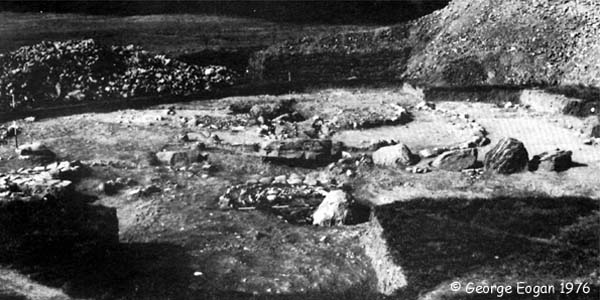
The passage appears to be aligned to the northeast, and may mark a rising lunar standstill. The picture above is from George Eogan's book from 1976 and shows Site 4 during the excvation.
Knowth - Satellite Site 5
Knowth 5 was discovered during Professor George Eogan's excavations in the 1970's. No remains of the monument was visible on the surface before the dig began. The site was extensively disturbed by the digging of two ditches or drains. Several large stones, one of which has a simple engraving, and a part of a mound were uncovered in the excavation.
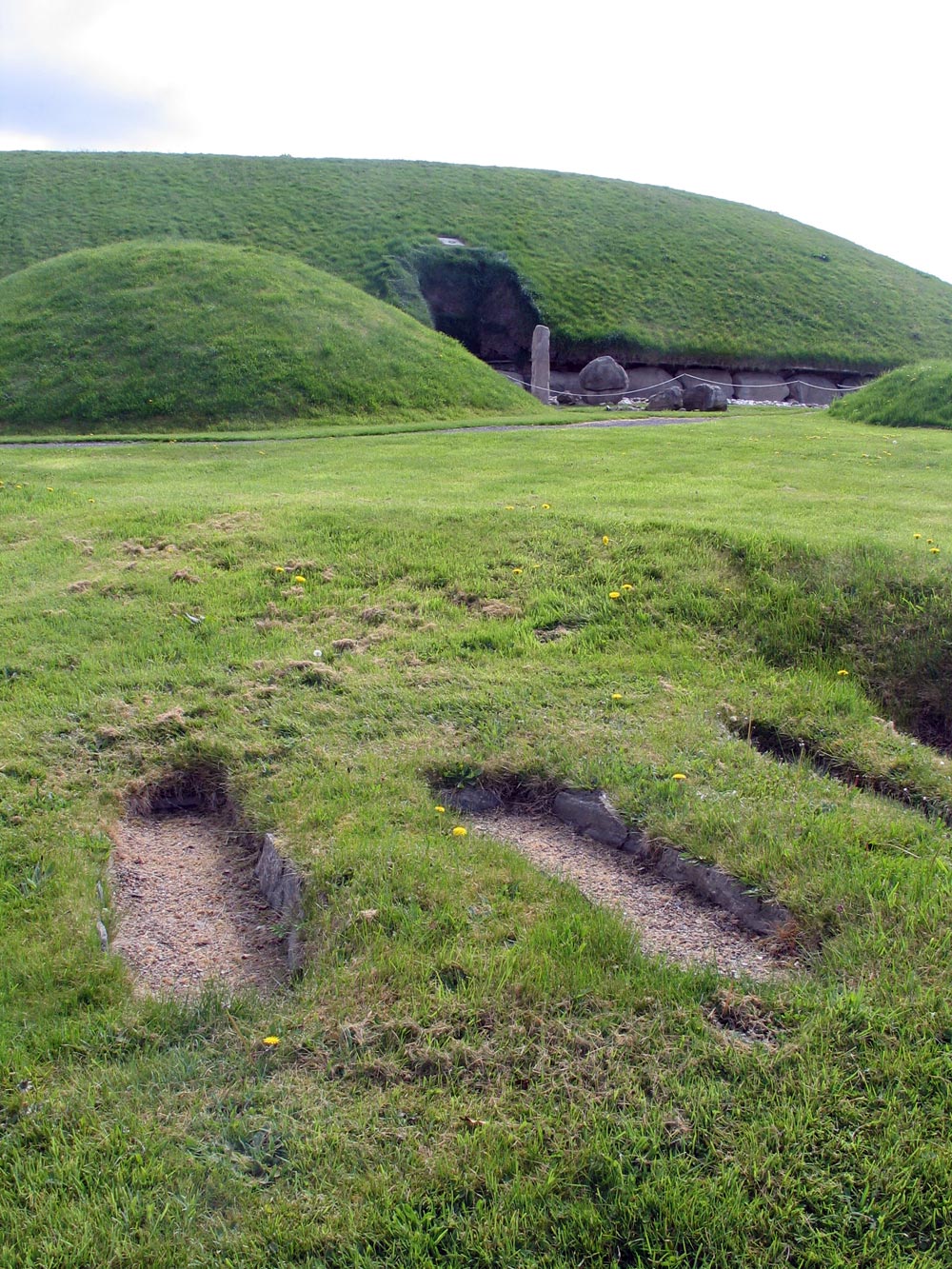
There are nine possible kerbstones, all but two of which had been disturbed. There was no remains of a chamber, but several large flags, which may have been capstones, were found in one of the drains. There were no finds or artifacts recovered from this monument.

